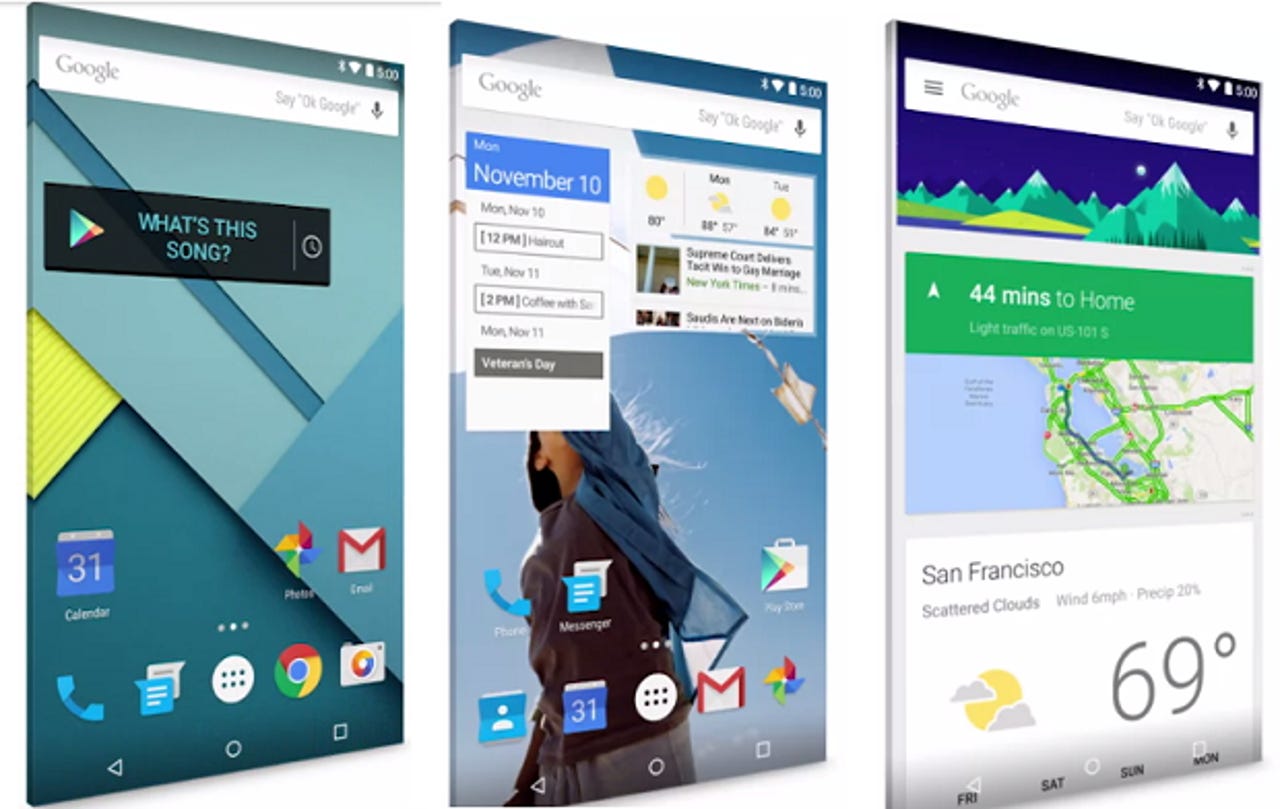Google's big Android Lollipop challenge: Make Material Design stick


Google has rolled out its Nexus 9 tablet, Nexus 6 phone and Nexus Player streaming device all in a bid to show off the latest version of Android, known as Lollipop, and the glue between the screens will be a something the search giant calls Material Design.
Like Apple, Microsoft and Amazon, Google is on a mission to tie its various devices together and adapt content and tasks to multiple screens. Windows 10 will be all about the multiple screens. Apple's iOS 8 melds tablets and smartphones and increasingly blends in with the Mac OS too with matching design metaphors.
Google theme for the current Android: Be together. Not the same. The message is that Android can meld disparate people, allow them to customize and hold a design theme together. Android 5.0 Lollipop comes with 5,000 APIs for developers, a bevy of features and a consistent design.
- Read more: Google's Nexus 6 phablet, Nexus 9 tablet: in pictures | Google unveils Nexus 6 phablet, Nexus 9 tablet; lands with Android Lollipop | CNET: Google announces Nexus 6 phone, available for pre-order October 29; Nexus 9 tablet and Nexus Player streamer, available for pre-order October 17
And don't doubt the importance of design. Design is what's selling enterprise software---assuming the core plumbing is in place---and is what makes everything from hardware to applications unique. Companies everywhere are looking for a few good designers for their products.
On its blog, Google noted:
"As you switch from one screen to another, the experience should feel the same. So Lollipop has a consistent design across devices—an approach we call Material Design. Now content responds to your touch, or even your voice, in more intuitive ways, and transitions between tasks are more fluid."
The takeaways on Material Design go like this:
- Provides a natural and intuitive feel.
- Uses visual cues and surfaces and edges.
- Lighting highlights and divides moving parts.
- Content is bold.
- Color, surface and icons emphasize action.
- Motion is designed to be meaningful.
Now here's the catch. Material design is important for Google and Android, but neither the search giant nor the community has a lot of control over the user interface in the long run. Lollipop's design will be showcased on the Nexus devices, but that's a limited market. Consider:
- Samsung will take Lollipop and add its own design, TouchWiz interface and overlay.
- HTC doesn't tweak Android all that much, but will.
- Amazon will chuckle at the Material Design approach and adapt its own user interface.
- Apple has control over its user experience as does Microsoft.
Add it up and material design is the most important user experience change and arguably the most inconsequential one too because the ecosystem is so vast. Google can design pure Android all it wants but the reality is that managing a consistent user experience is a lot like herding cats.